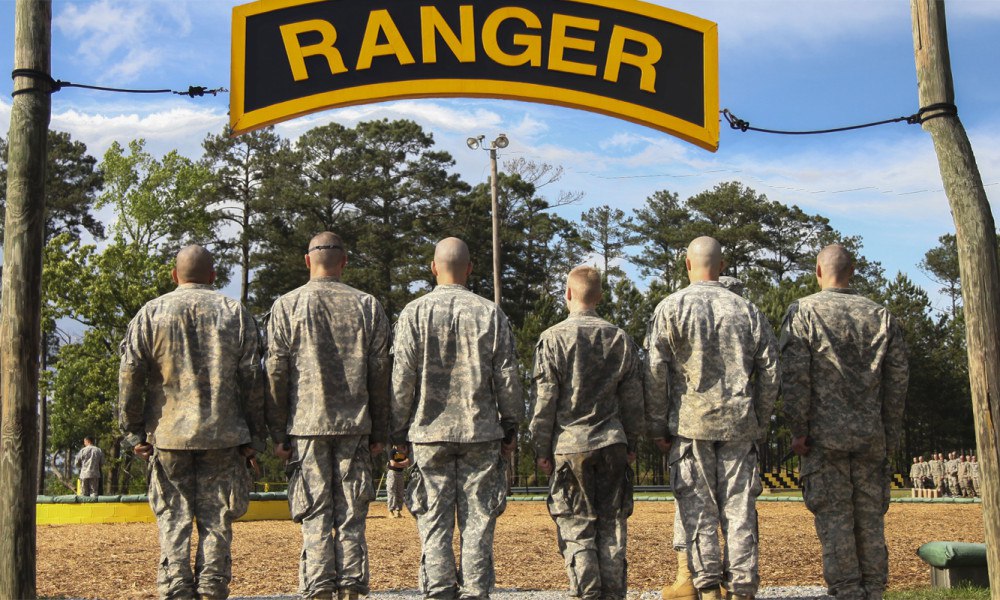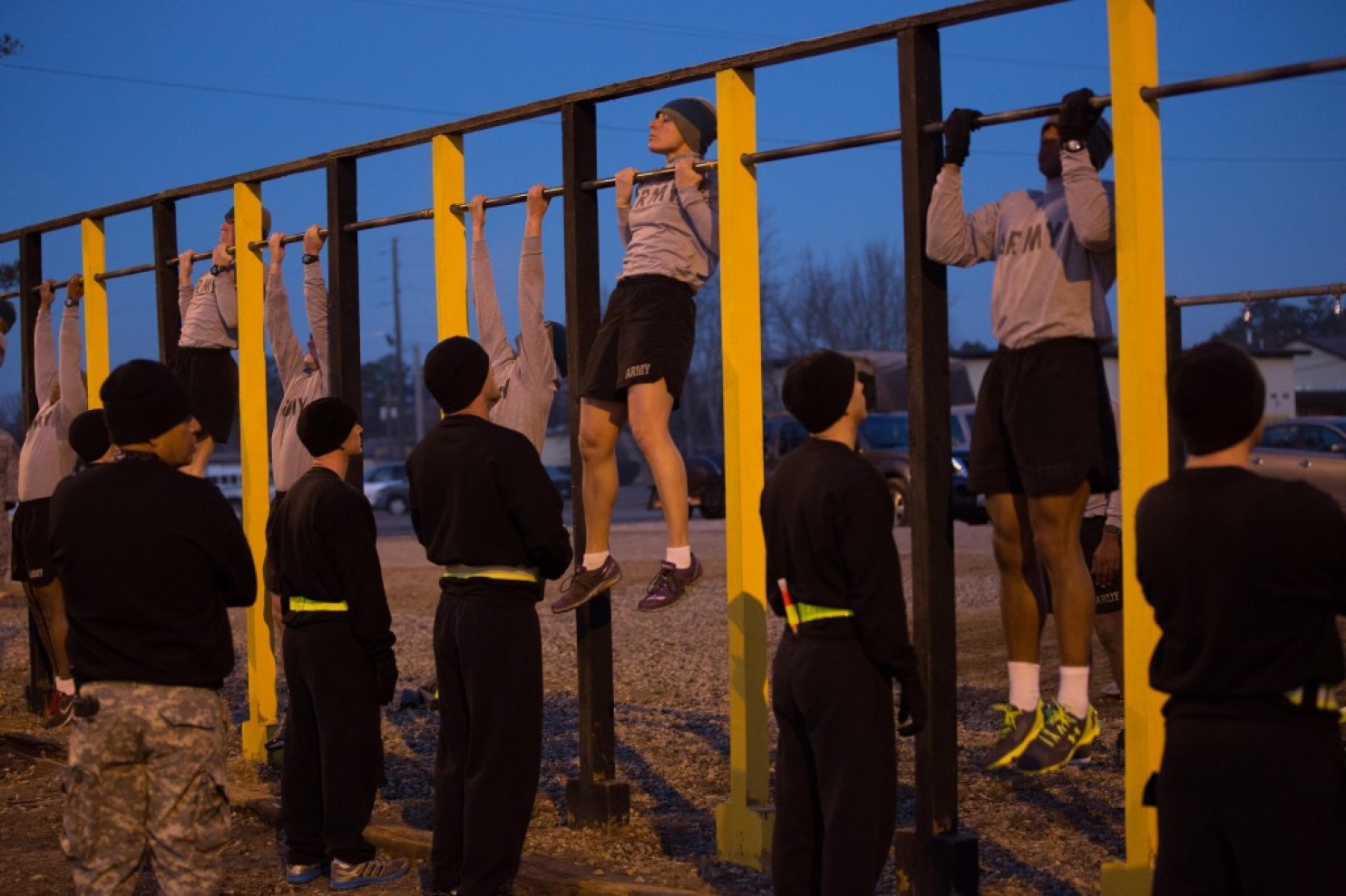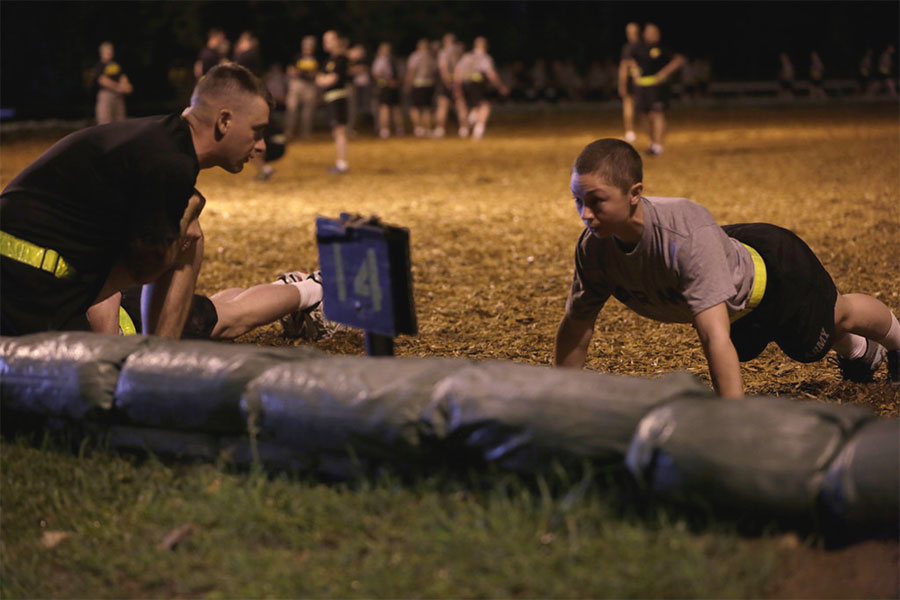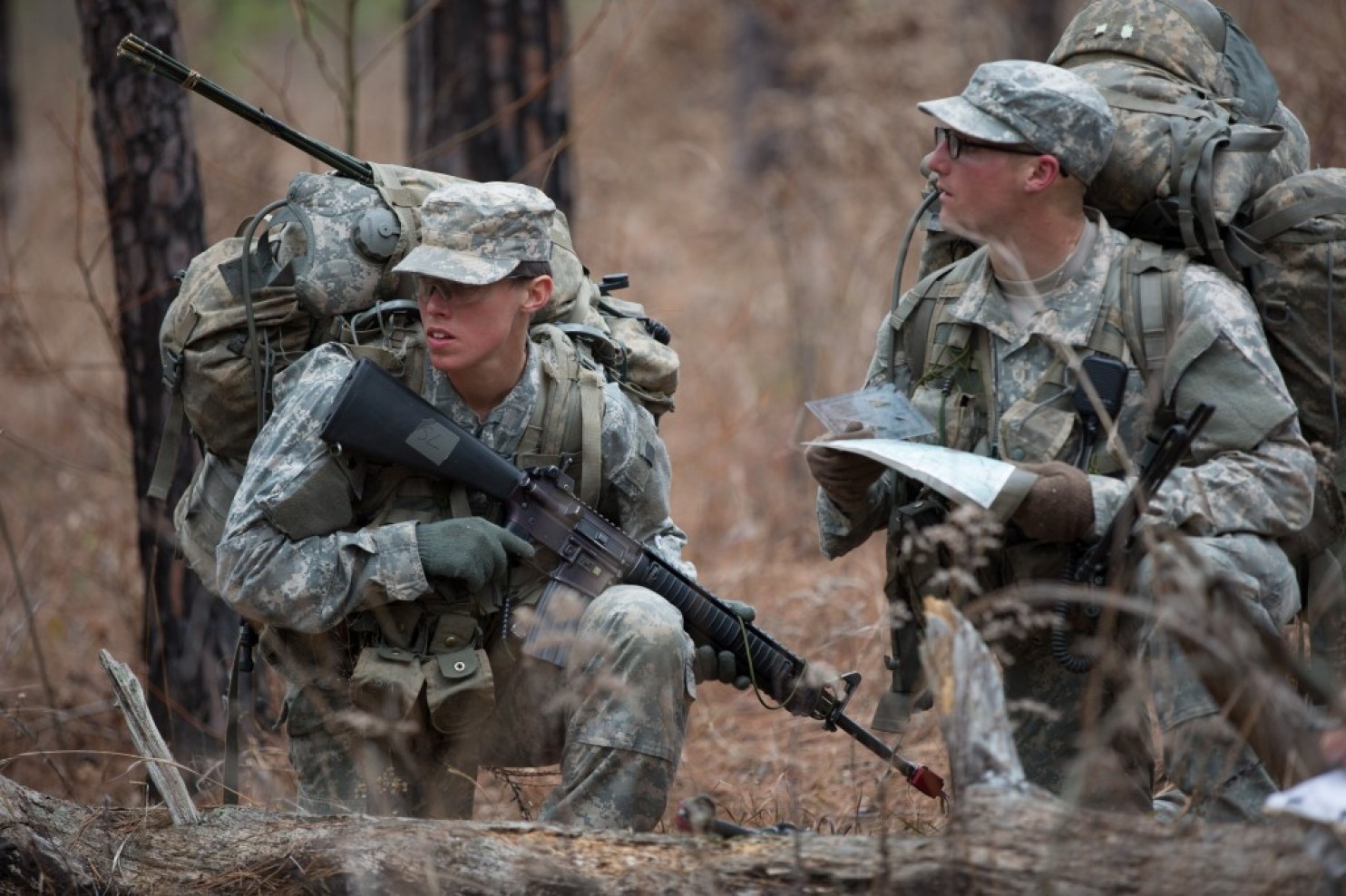The United States Army Ranger School is one of the most challenging military schools in the world. It is the Army’s premier combat leadership and small unit tactics course. For the last 12 years, only 49% of those who have attempted the course have succeeded. Each month over 400 students arrive at Fort Benning, Georgia for their chance to face the toughest physical, mental, and emotional challenge they will likely ever encounter. There is a reason Vietnam veteran and former Department of Military Instruction Director at the U.S. Military Academy COL Robert “Tex” Turner famously said, “I woke up in a cold sweat, I had a nightmare that I was still in Ranger School. Thank God that I was in Vietnam. Compared to Ranger School, combat was easy.”
I get a lot of questions from cadets on how to prepare for Ranger School. Every Ranger School graduate has a horrific (and most likely true) story of the pain, suffering, and seemingly unimaginable feats of human endurance from their time during the course. These stories help maintain the cultural significance afforded to soldiers that wear the ranger tab. But these stories offer little that will help hopeful ranger students prepare for the experience. There are many challenges and stressors in Ranger School – some challenges you can prepare for and some you cannot. These are my personal recommendations for aspiring Rangers.
Not knowing what to expect: You can reduce the stress of the unknown by seeking out information from reliable sources. Ask questions of Ranger graduates that will make you more aware of what the course entails, rather than Ranger School war stories. How are patrols graded? What does a normal day look like during the field problems? How do peer evaluations work? The Airborne and Ranger Training Brigade has done a great job of providing information on their website. They’ve even provided a program of instruction calendar that shows the events of every day of the course.
Gaining entry. Many hopeful Ranger students fear that they will not pass the entry tests that are given during the first week of Ranger School. This week is aptly dubbed the Ranger Assessment Phase (RAP) where students are evaluated for their ability to endure the 62 day school. Failing to pass the tests of RAP week is the biggest reason soldiers fail out of Ranger School, topping all other failures at 62%.
RAP week includes the Ranger Physical Assessment (RPA) given bright and early on the first day of the course. The RPA requires students to complete 49 push-ups, 59 sit-ups, a 5-mile run in 40:00 minutes, and six chin-ups from the dead hang. Of the testable events of RAP week, the RPA is the biggest killer.
This is a challenge you can overcome. There is no Ranger School standard or quota as many believe. Students are graded against Army standards. Students fail because they have never been held to these standards. I’ve seen many eager soldiers that reported to Ranger School having scored 90 or 100 pushups at their unit or last school clearly shocked when they fail to achieve less than the required 49 push-ups. They fail because they did not follow the army standards of “when viewed from the side, your body should form a generally straight line from your shoulders to your ankles…begin the push-up by bending your elbows and lowering your entire body as a single unit until your upper arms are at least parallel to the ground. Then, return to the starting position by raising your entire body until your arms are fully extended. Your body must remain rigid in a generally straight line and move as a unit while performing each repetition.”
The next highest attrition event in RAP week is land navigation. This is another challenge where your preparation can make a big difference. Fort Benning terrain lends itself to terrain association, but dead reckoning may also be your preferred technique. The best way to prepare for this is to practice. If you are constrained by resources or training sites, you and a few friends can set up points at your local park and practice navigating to them.
You must prepare for RAP week. Yes, I do advocate training for the test. I am old school in that I follow the frequency, intensity, time, and type (FITT) methodology. All this means is that if you want to pass a push-up, sit-up, pull-up, run, and foot march test, then there better be a lot of that in your work out plan. You should also have someone else test you—to Army standards–frequently. My last recommendation for the entry test has always been that you should be able to pass the requirements on your WORST day, not just when you are feeling good.
Physical exertion: Great. You made it into Ranger School. Now you have to physically perform and endure during the course. This is where being overall strong and fit comes in. There are many real and fake workout programs out there that guarantee success in Ranger School and Special Forces courses. The U.S. Army Ranger School provides a 30-60-90 day workout plan and a nutrition/progressive overload prevention guide. My only recommendation is to foot march with a ruck sack – a lot! You will wear a ruck for up to 15-20 hours a day for each of the three 10-12 day field problems. The craziest thing I observed as a Ranger Instructor was students in the mountain phase with something we called “rubber neck.” Because the students’ bodies were weak and not prepared for the pull of the weight of the ruck on their neck and back for extended periods of time, their neck muscles seized, a large lump formed, and their heads were locked all the way down on their chest. Like any muscle injury, their condition was temporary. It was also preventable. Be prepared!
Sleep deprivation: You will get zero to four hours of sleep per day in Ranger School. I’m not joking. You will experience a level of tiredness you could never impose on yourself. You will see people fall asleep standing and some that remain asleep even as the slam into the ground. This is not a challenge you can do anything about. You can’t and shouldn’t practice sleep deprivation.
Food deprivation: You will get two Meals, Ready-to-Eat (MREs) a day during most of Ranger School. Each MRE provides an average of 1,250 calories. That may seem like a lot but since Ranger students are moving most of the day they burn multiple times over that amount. It is very common for Ranger students to lose 10-20 pounds during the course. There is not much you can do about this challenge. I do not recommend attempting to “bulk up” or adding weight before attending the course. That will only detract from your efforts to be in an overall healthy and physically prepared state.
Not knowing small unit tactics: Ranger School is designed to teach students everything they need to know in the course. The classes given during the school start with the role of a riflemen and progress all the way up to how to conduct a raid with a Zodiac boat insertion. Science will tell you that being sleep deprived is not conducive to learning. You will definitely learn in Ranger School, but it will be more from repetition than anything else. So the more you know about light infantry small unit tactics, the easier and less stressful Ranger School will be.
I strongly recommend that anyone heading to Ranger School to have a firm understanding of troop leading procedures – specifically giving Warning and Operations Orders.
All phases of Ranger School will include you conducting a recon (squad and platoon), ambush (squad and platoon) and raid (platoon). You will also establish and operate in patrol bases for a majority of the patrols. If you know the doctrinal requirements and steps to executing each of these operations, you won’t have to stress about learning them while being evaluated.
The only resource you will have in the course is Student Handout 21-76 (SH 21-76), the Ranger Handbook. I do not recommend reading and memorizing all 357 pages of the Ranger Handbook. Much of it is not applicable to passing the course. That is because the handbook doubles as the handbook for the course and a tactical handbook for light infantry forces. In preparing for Ranger School, I would focus on the following:
Chapter 1 – Duties and Responsibilities. Pages 1-1 through 1-8
Chapter 2 – Operations. 2-1 through 2-17; 2-29 through 2-31
Chapter 6 – Movement. Pages 6-1 through 6-10
Chapter 7 – Patrols. Pages 7-1 through 7-24
Chapter 8 – Battle Drills. Page 8-1 through 8-20
Appendix A – Resources. Pages A-1 through A-19
If you are a West Point Cadet, I would highly recommend reviewing the recon, ambush, raid, and patrol base chapters of your MS300 (Platoon Operations) Digital Textbooks. The step-by-step interactives included in the book use Ranger School techniques.
I would also review the MCOE Warrior University videos of Consolidate & Reorganize, RTB (Dismounted), Formations and Orders of Movement, RTB (FOOM) Dismounted, React to Contact, RTB (Dismounted), React to Indirect Fire, RTB (Dismounted). All of these videos were made with information provided by Ranger School cadre.
Being graded: Ranger School is one of the few places where students are graded for their performance in tactical operations. While the success of the operation will contribute to your assessment, the instructors evaluate each individual’s actions in their leadership position. Each phase of Ranger School patrolling is grading using the same three block model. A chain of command will receive an Operations Order in the early morning. The Platoon Leader, Platoon Sergeant, and Squad Leaders will be graded on their troop leading procedures from receipt of the order through stepping off for the mission. Generally, at that point or shortly after, a new chain of command will be put in charge and lead the operations from movement through actions on the objective. Next, a new chain of command will take over to lead movement to the patrol base through patrol base operations during the night.
The best way to prepare for the stress of being graded is training to standard (as discussed above) and confidence in your abilities. Ranger Instructors will be looking for you to be assertive, make decisions based on sound planning and the principles of patrolling, and violence of action where appropriate.
Internal conflict: The final challenge of Ranger School is you. Ranger School will take you to mental, physical, and emotional places you have never been before. You must be committed to finishing the course or you will question yourself during the darkest moments. Some people will give you recommendations for developing mental toughness but it will ultimately be a question of how bad you want to graduate.
The worst thing I saw in Ranger School were students that gave up either during the course or in the boards that decide whether you continue, recycle, or leave the course. Each had their own reason, but the worst were the ones that rationalized their decision on something waiting for them outside the course (family, deploying unit, etc.). My best recommendation is where possible remove the idea of leaving the course for your own reasons. Ranger School will let you stay in the course as long as you show improvement and desire to remain.
Ranger School is a masterfully designed experience that will place all students at the uppermost limits of physical and mental stress before the point of injury. It will suck. That is the common experience shared by all graduates. If you endure, it will also be one of the most memorable experiences of triumph of your life. Many of the challenges and induced stress in Ranger School have nothing to do with your preparation. But there are challenges you can and should be ready to tackle.






I started Ranger School “Ranger 5 Eat Em Alive” in Oct. 1969 and graduated with TAB in Dec. 1969. We started with 1,000 points to lose and had to have 750 left to graduate with TAB. You lost points for failing a mission as a leader, being caught with poggie bait, falling asleep and delaying a mission.etc. We were not only evaluated based on leadership positions by lane graders but on a 24 X 7 basis by 2 Vietnam veteran Captains who were our TAC officers and it seemed at least 1 of them were always with us.
We started with 400 RA 2Lts (200 ROTC DMGs & 200 West Pointers) and finished with 197 on the tarmac at the FL Ranger camp so our attrition rate was 51%. The light infantry tactics we trained on were oriented on Vietnam.
I recall many of my fellow officers dropping out of Ranger School due to injuries (usually allowed to recycle); inability to cope with sleep and/or food deprivation (we only got 1 C-rat or LRRP a day except while in the mountain phase), etc. I started Ranger School at a Fit 208 lbs and finished as a semi-skelton 177 lbs. I do not recall any such condition as “Ranger School will let you stay in the course as long as you show improvement and desire to remain” as expressed by the author but maybe this standard existed and I didn’t know about it.
The graduation with TAB of the 2 females who recently attended Ranger School was a travesty in that standards were bent including extra chances to pass physical tests; female officer observers were with them throughout (adding pressure on the TACs and lane graders), & General Officers were directly involved in insuring their success (again applying command influence to pass these females).
In fact the decision by the Commander-in-Chief and SOD to open all military positions in all services to women including direct combat positions ignores the physical and mental differences between men and women; studies done by the British Army and recently by the USMC that show women do not perform in simulated combat as well as men, etc. will reduce readiness and eventually get soldiers of both genders killed unnecessarily. A gender neutral military is a stupid idea that has killed the Warrior ethos.
I was a first time Go at Ranger School. Here is my Youtube Series recounting my experiences. RLTW! https://www.youtube.com/playlist?list=PLP3vQUHboK3KiILSrMSUry-KCwU_Yg5Wz
I did well enough as a Ranger student that I got my follow-on orders to Fort Hood changed and was sent to the Florida Camp instead. I was an RI in the Florida Phase 1976-1979. During that time we put doctors, lawyers, and chaplains through. Women were already serving in positions wherein they and the soldiers they led would have benefited from Ranger training. Since then that's exponentially more true. A good friend served in a Ranger battalion before going to flight school. While in Iraq, flying night raid inserts against hostile targets every night his daughter was an MP E-5, running convoys. He's the first to agree that women should be allowed to attend Ranger school. If Ranger School is really a leadership school and not some macho initiation ritual then we need to accept the fact that women should be allowed to attend. Everyone agreed that the women who graduated passed every objective test. I do not believe they got fair assessments on patrol and peer ratings.
Couldn’t agree more. No disrespect intended to the women more so to our dumb political propaganda
Great write up. It is agreed that women while quite capable are not in general as capable as men biologically.
I went through Ranger Class 7-70 and the program has changed a little bit. For example, the 5 Paragraph Field Order has been modified from my time.
And we didn’t have the 5 mile requirement, but if you are unable to complete five 8 minute miles as a personal conditioning standard, you probably are unprepared for the physical demands of the 62 days.
Land navigation is the single greatest factor of failure if you can cut it physically, The leadership evaluations are beyond your influence, but you can develop an accurate pace count. And much of land navigation is done in the ankles, especially in the Mountain Phase.
I had the advantage of being a member of the Patrolling Committee of the Ranger Department at Harmony Church, so I had been facilitating IOBC and OCS students before I got into the Ranger School. As the article points out, the limp and the lame tend to wash out the first week: 62% of the program failure is probably accurate, but I was surprised by the people who failed to prepare themselves spiritually for the program, which the physical aspects reflected. Ranger School is a program in organized misery and the old joke about it being mind over matter (if you don’t mind, it don’t matter) is of the essence.
However, the informal motto of the program, Cooperate and Graduate, is the most important leadership element/attitude to adopt: learn to lead like an Alpha Female.
You cannot get through by yourself: There was one moment during the Florida phase where I couldn’t go on but a member of my squad carried my load until I caught my breath. It was payback for my support in an earlier phase.
Play the game: what goes around comes around.
Drive on, Ranger!
Regarding Royal A. Brown III’s comments on “gender neutrality, I couldn’t disagree more. If I had stayed in the Army, a career goal was to head up the Ranger Department and, if that happy circumstance had occurred, I would have bent my efforts enrolling women in the program twenty years before they eventually got the chance. They would have had to take their chances, fair and square, but the fact that the THREE women who have completed the course were willing to submit to the rigors of the program over a 6 month period says a whole lot more about their will to win than the slurs against their gender generally advanced as “scientific evidence” to exclude them. As Maj. John Spencer points out, if given the choice between combat and recycling through Ranger School, nobody who has been through it chooses Ranger School.
Women will always be represented in the infantry as a very tiny element, but the women that are there belong there.
Mr. Wilson, your final sentence indicates you are unlikely to understand combat and warfare. If true, as I suspect it is, that: “Women will always be represented in the infantry as a very tiny element …” Is THE problem. Combat is neither suited to nor should be about ‘personal achievement nor advancement’. In addition, to provide logistically for a tiny minority of ‘special soldiers’ means that time and other resources that should be focused on winning are diluted towards supporting the needs of a tiny minority. Have you heard these quotes?
“The tactics…no, amateurs discuss tactics,…. Professional soldiers study logistics.” – Tom Clancy
“My logisticians are a humorless lot … they know if my campaign fails, they are the first ones I will slay.” – Alexander the Great
Finally, it is obvious that the military has lost its ever loving mind. Gay boys showering with straight boys; transgendered joining for medical benefits; allowing for guys to wear beards for ‘religious’ purposes; women in infantry and combat jobs. All this and ships are too broken to sail and the Marines can’t get half their planes in the air. But hey, let’s all have a group hug.
I appreciate the fact that this article contains advice that is gender neutral. Regardless of whether you think women should or should not serve in combat arms, doesn’t mean that they shouldn’t be afforded the opportunity to hear advice from an accomplished officer and leader. Although I don’t plan on entering into the combat arms upon graduation, I took many of these points to heart and will use them to lead people, in whatever capacity the Army decides, to the upmost of my ability.
Thank you. It was definitely written to be gender neutral. Success or failure at Ranger School has nothing to do with your gender and much to do with fortitude, grit, and resilience.
It is pretty interesting to see that a large portion of successfully making it through Ranger school boils down to self-grit. Being afforded the opportunity to attend Ranger school is great opportunity to push your body and mind to a level you did not know was possible. A mentor of mine once told me, “Ranger School is an opportunity to show your soldiers that you are willing to do anything to make yourself as prepared as possible to lead them.”
As a Cadet at USMA this article is extremely helpful.
Thank you Cadet Davies!
This was a great article and thank you for the tips. I hope to go after I finish USMA and this will help.
Always keep in mind that Ranger School is about not only enduring but also an opportunity to demonstrate leadership under stress and not just when in an evaluated leadership position. There will be some students who will keep their head down and only perk up when they are in a leadership position. The Ranger student should demonstrate leadership at all times which can mean you assist with land navigation, while on patrol maintain situational awareness treating it like a combat mission not droning along just trying to get by, keep other Rangers alert, share in carrying the load when the Patrol Leader or back in base camp the class leadership needs a volunteer you step up and do so. When a fellow Ranger student is down provide encouragement and if possible share your knowledge to improve their performance. Embrace the suck and drive on. Be a leader at all times.
My RS did this pretty much to the T and then some and still got peered low. Seems like peer evals should be done away with as they are often biased and geared toward people who are buddies or bros instead of giving a fair assessment of a top notch leader who they will purposely rate low because of their own insecurities.
I agree, the peer reviews should not be pass/fail for the course. Too many back stabbers gaming the system by screwing their buddy over. I'd peer myself last just to not screw another ranger, meanwhile battle buddy whispering to others to peer me last. fuck him
Great advice Mr McIntyre. All of us who endured Ranger School can probably remember (even after such a long time – Ranger 8, entering 3 Jan 69) members of our squad or platoon that we looked to because they always tried to keep up the can do attitude within the platoon. Be that person. Regarding the gender neutral controversy: It shouldn’t be whether it is “fair” to individuals. It should be about the effect that it has on the small unit that is put in extreme stress in infantry combat. Individual preferences, beliefs, etc. shouldn’t mean a thing when a unit is in deep shit and interpersonal relationships between soldiers will determine the success of the mission and/or survival of the unit.
I have a family and I want to be a chaplain one day but along the pathway I would like to endure and take part in the fight so that I can minister to soldiers on a physical level I have a great drive to atleast educate myself the only disadvantage I find to pursuing this is time with family if I end up in a Ranger position I know they frequently deploy and train constantly
Relate on a *personal level
This is in response to Royal A. Brown III. I am a female paratrooper (and Air Assault qualified) who was in the 21st MP Co (Abn), at Ft Bragg, NC from 1988-1992. I was part of a group of BAD ASS FEMALES, who were as fearless as any of the males we stood next to. I was part of a group of womyn who "actually" passed RAP, several times. CSM Kingston, plead with DOD to send us to Ranger School, each time being denied by the mysoginist pukes in-charge. Our fellow male soldiers even sent letters of recommendation, only to fall on blind eyes. While at Panama Just Cause, and Desert Shield and Desert Storm I witnessed several males shirk their duties while in combat to the point they probably would have been injured if was not for one of the womyn soldiers slapping sense into them and taking charge of the situation ourselves. So shut the hell up, since there are plenty of weakass and cowardly male soldiers. I feel sorry if you have a daughter, since she needs a father who will raise her to be a tough womon who will have a high sense of self worth and esteem, and be successful at anything she decides to go after, especially if she wants to serve her Nation. Nuff said.
I served in a wartime Army. Story 1. I was friends with a female sergeant who was my age. She did 42 pushups on her PT test score a perfect 100. I had to do 42 pushups on my PT test just to not get kicked out of the Army. Story 2. My MOS had a lot of hand-to-hand combat training. The number of times that a female defeated a male in our bouts (hundreds, over a period of about 4 months) was zero. Story 3. I was witness to an in-depth, passionate discussion about how females should not be allowed to enlist in the Army. There were four participants. All four were females in the Army, *including* the sergeant I mentioned before; she knew perfectly well she was graded at a lower level.
Your claims are nonsense, and this smells like stolen valor. For one simple, obvious thing, female soldiers refer to themselves as "females," not women and certainly not that stupid made-up man-hating nonsense "womyn." Come on. Secondly, the very idea that a collection of professional Army soldiers wrote and signed their names to letters demanding a violation of national policy for *you* is absurd, but organizing a letter-writing campaign and blaming its supposed failure it on unnamed "mysoginist pukes" is straight from the fantasies of a gender studies class. 'Pleaded with DOD.' Lol.
I'm also hugely amused by your claim to pass a test at a school you said you weren't allowed to attend. What are you, a time traveler?
What physical performance metrics would be expected to GRADUATE said program, rather than for mere candidacy? Concrete if there are specific required physical trial examinations at the end, estimated if it's just a matter of completing training, not quitting or sustaining an injury ?
Thx.
Military schools are a good alternative to conventional education. The biggest difference with military schools is that there is an integration of military principles in the curricula. Despite this, military schools, like other traditional schools, strive to prepare students for lifelong success.
All the information that you shared with us is very useful for us. Thank you for sharing with us.
Class 2-71. I believe it is possible for a woman to earn a Tab but at what cost? They should receive no more prior training than a man. It is difficult to pass as a man. If judged as a equals more women will fail than men. Why waste an allocation for PC. A side note. I was in the first Airborne class to admit women. We graduated in Dec 73. Their success was determined before they began. They were useless. They fell out on an admin run to the training area and were unable to do any pull-ups. They passed. They were pulled out of the class and were given E-7’s as personal guides. I later ran into one at Bragg. She was a rigger that couldn’t the work but had wings and a po’d NCO. It was a long time ago but when the Army wants something to happen, it happens. I always assumed the same logic was applied to those successful women earning a tab.